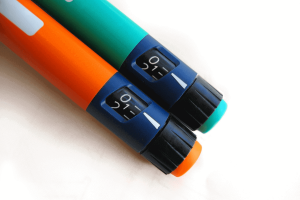Tips for Dental Care and Diabetes
Did you know people with diabetes–especially with blood sugar levels that aren’t well controlled–are more likely than non-diabetics to develop oral health problems such as tooth decay, ulcers, thrush, and gum disease? In honor of National Dental Hygiene Month, we’ve rounded up tips to help you brush up on your oral care practices. With a little work, you can help prevent these common dental conditions. That’s something to smile about.
Brush and floss. It may seem obvious, but people with diabetes are more likely to develop plaque–that pesky, cavity-causing stuff–around their teeth. That’s because people with uncontrolled diabetes have more glucose in their saliva, which helps plaque-causing bacteria to grow. When in doubt, remember 2-by-2, or to brush your teeth for two minutes, twice a day.
Show your gums some love. You know it’s important to brush your teeth, but did you know it’s equally as necessary to brush your gums? Because diabetes lowers your body’s ability to fight infection, your gums are more at risk for developing inflammation, fungal infections, and gingivitis. To give your gums the love they deserve, WebMD recommends brushing in an up-and-down motion with holding your brush at a 45-degree angle. Remember: It is possible to do too much of a good thing. Over-brushing–or brushing more than twice a day–can cause your gums to recede, exposing the sensitive part of your teeth’s roots.
Know the signs. Sometimes, gum disease is painless. It’s also possible to develop a cavity with knowing about it. In addition to visiting your dentist, your best defense against dental diseases is monitoring your mouth. Here are some of the American Diabetes Association’s key things to watch for, when brushing your teeth. If you notice any of these warning signs, speak to your dentist right away.
- Bleeding gums when you brush or floss
- Bad breath
- Red, swollen, or tender gums
- Gums that have pulled away from your teeth




